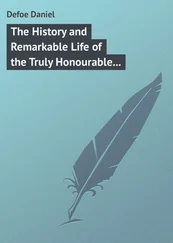Three centuries later pepper was still an elite taste among the Greeks. According to Plutarch, one admirer was the Athenian tyrant Aristion, who was happy to feast even as his subjects starved. When a Roman army besieged Athens in 86 BC the cost of wheat soared to 1,000 drachmas the bushel, whereupon the chief priestess of the city approached the tyrant to beg for one-twelfth of a bushel of wheat. Callously, he sent her a pound of pepper instead.
All that would change with the Romans. That a Roman soldier could share the taste even in the outer reaches of empire depended on one of Rome’s more stupefying technical achievements, and it marks the moment when the spice trade between Europe and Asia first emerges in clear view. Over 1,500 years before Vasco da Gama sailed his three small caravels to India, the Romans had done the same, but in bigger vessels and on a much grander scale. And as with da Gama after them, a strong aroma of spice hung over their exploits.
By the time of the geographer Strabo ( c .63 BC – C .AD 24), writing a few decades before the legions decamped from the Lippe, an annual fleet numbering some 120 ships set off for the year-long round trip to India. The outlines of their journey are described in the document known as the Periplus, a pilot’s guide to sailing in the Indian Ocean. Written by an anonymous Greek-speaking sailor sometime in the first century AD, the Periplus describes each step of the journey, identifying which harbours to stop in and which goods to acquire. His readers were the long-distance traders and trampers who serviced the ports and markets in what he calls the Erythraean Sea, by which he meant the huge expanse of water encompassing both the Red Sea and the Persian Gulf and Indian Ocean beyond.
There were two main trade routes within this vast expanse of water, each beginning at one of several ports along the Egyptian shore of the Red Sea. The first dropped down the African coast as far south as Mozambique, calling at the ports and trading stations that received products from the hinterland: ivory, incense, skins, slaves, ebony, exotic animals and gold. The second and longer voyage, and the conduit by which Rome obtained its spices, turned east across the ocean to India. The ships that sailed it were some of the behemoths of ancient navigation, immense ocean-worthy freighters displacing up to a thousand tons. One writer compared an Indian freighter to ‘a small universe in itself … equivalent to several ships of other nations’. On board were crews of marines to protect the valuable cargoes from the pirates who plagued these waters until modern times. Picking their way south through the reefs and rocks of the Red Sea, the fleet fanned out at the Bab el Mandeb, the bottleneck where Africa and the Arabian peninsula converge. Some made their last landfall on the southern tip of the Arabian peninsula, near present-day Aden – the same place where the India-bound steamers of the Raj would stop for coal, telegraphs and water some two thousand years later. Others sailed on south to Cape Guardafui, Africa’s easternmost point, where the Horn juts east into the Indian Ocean. In ancient times, the cape took its name from the traffic that paused here: the Cape of Spices. At this point the ships on the Africa route turned south, and the India-bound vessels turned their prows east.
According to the Periplus, the next stage of the journey was pioneered by a Greek sailor by the name of Hippalus. In the age of sail all navigation in the Indian Ocean was – to some extent, still is – overshadowed by the annual cycle of the monsoon. From May to August the summer monsoon blows hard and wet out of the south-west, unpredictably and occasionally furiously. By late August, the blustery squalls weaken into stiff breezes and the occasional storm. By September the summer winds splutter and falter, forgetting their outbursts and fading into indecisive squalls and calms.
Next comes a complete transformation. From November to March the winter monsoon wafts unfaltering dry, balmy zephyrs from the north-east, as reliable and as regular as any trade wind. With the right timing, outward or inward bound, ships were guaranteed a following wind in the starboard quarter. To Hippalus went the credit for recognising this annual pattern, thereby unlocking the secret of navigating in the Indian Ocean. Armed with his insight, the Romans sailed across the belly of the ocean to India, bustling over in anything from twenty to forty days. While still out to sea they were warned of the imminent approach of land by the swarms of red-eyed sea snakes that welled up around the hull, a mariner’s guide in these waters to this day. Soon after a blue-green blur lifted out of the sea, the cordillera of the Western Ghats.
The Romans called at any one of nineteen ports in which, in the words of the Periplus, ‘great ships sail … due to the vast quantities of pepper and malabathron’. * In return for manufactured goods such as glassware and works of art, tin and Mediterranean coral – much prized in India for its imputed magical properties – and above all bullion, Rome’s traders brought back ivory, pearls, tortoiseshell, diamonds, onyx, agate, crystal, amethyst, opal, beryl, sapphire, ruby, turquoise, garnet, bloodstone, emerald and carnelian. There were silks trans-shipped from China, parrots for a senator’s menagerie and tigers, rhinoceroses and elephants destined for public slaughter in the arena. There were spices from the north, costust † and nard from the Himalayan foothills, and still others arriving from further east (including, quite possibly, Moluccan cloves and nutmeg, although there are questions over their identification in Rome before the fourth century AD). But it was pepper that was Malabar’s chief attraction.
Rome’s spice traders were pointed in the right direction by less celebrated forerunners. Before the Romans arrived there were Greeks; and someone, presumably, had shown the Greeks the way. Tales of India had filtered west since the time of Herodotus ( c .484– c .425 BC), and Greek travellers had known the land route to the north of India from at least the time of the conquests of Alexander the Great. In 325 BC Alexander’s admiral Nearchus sailed from the Indus back up the Persian Gulf and up the Euphrates to Babylon. Around 302 BC one of Alexander’s successors apparently sponsored two voyages from the Euphrates to India and its spices. However, the first hard evidence of any European involvement in regular seaborne trade with the spice-bearing south of the subcontinent dates from the time of the Greco-Egyptian dynasty of the Ptolemies (305–30 BC). Successors to the Egyptian fragment of Alexander’s empire, the Ptolemies had sporadic commercial exchanges with India, though these exchanges were probably in Arab (and Indian?) hands. They exchanged ambassadors with the Maurya emperors Chandragupta II (ruled C.321– C .297 BC) and Asoka (ruled c .274– c .232 BC). Back in Egypt Ptolemy II’s (ruled 285–246 BC) triumphal procession of 271–270 BC featured Indian women, oxen and marbles.
According to the geographer Strabo, the first European to attempt to establish serious commercial contacts with India was a certain Eudoxus of Cyzicus, an entrepreneurial Greek who made the acquaintance of an Indian shipwrecked somewhere on the shores of the Red Sea. Around 120 BC Eudoxus was in Alexandria when the regime’s coast guards brought a half-dead Indian sailor to the court of Ptolemy Euergetes II. Most likely the castaway came from the Dravidian south of the continent, or possibly even Ceylon, since by this stage an interpreter for one of the northern languages could have been found without too much difficulty. Before long the enigmatic arrival acquired a sufficient command of Greek to interest Eudoxus in the possibility of going to India himself.
Читать дальше











